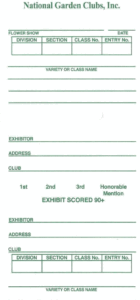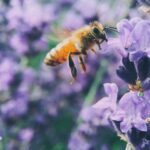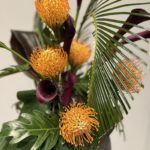Completing an NGC Horticultural Entry Form

NGC entry card
When you enter horticulture in the Framingham Garden Club fall show, or in any National Garden Club horticulture show, you must complete an entry card for each of your entries. This page will instruct you on how to do this.
Here is an example of a properly completed entry form.

Find printable entry forms here: https://drive.google.com/file/d/1sg1o3sESgDri1jrrlyAj8aevU5dNsdWv/view
To Complete:
Flower Show Name and Date – look in the yearbook for the current year’s show name and date
Division – our yearbook doesn’t tell you this, but this will be Division I in our club show. For an NGC show, check the flower show schedule to see what division horticulture is.
Section – refer to the yearbook or schedule – this will be a capitalized Section Letter – as in Section A, B, etc.
Class No. – look for your class number
Entry No. (ignore entry no.)
Variety or Class Name – this is a misnomer. Enter the binomial name of the specimen (genus plus species). See below for information on binomial names.
Exhibitor information – Write your name, address and club. Tip: Use address labels to save time
Below the line, repeat Exhibitor information, Division, Section, Class No. and “Variety or Class Name” (binomial name)
What is binomial name
‘Binomial’ literally means ‘two names’ and refers to the two core names (Genus and species). The species name is also called a special epithet. To properly label your entry, you must include both – the genus and the species. Ideally, also add the name of the variety, cultivar, series or patented name.
Tip: How to find binomial name or at least the genus: original label, nursery, websites such as https://www.delvalhosta.org/what-hosta-do-i-have, Facebook forums, phone apps such as PictureThis, PlantSnap, PlantNet, Hallson’s Garden Forums (https://perennialreference.com/forums)
How to write the binomial name:
In an NGC flower show, it is important to follow certain rules on writing the binomial name of your exhibit. Otherwise, it may not be considered for a top award. In short, capitalize the Genus is capitalized but not the species (specific epithet). Italicize or underline both. You can also add the common name, but put it in parentheses. Examples:
- Binomial name for a marigold: Tagetes putula (French marigold)
- Binomial name for sunflowers: Helianthus annuus (annual sunflower)
- Binomial name for New England Asters: Symphyotrichum novae-angliae (New England Aster)
- Binomial name for Coneflower: Echinacea purpurea
Ideally, also add the name of the variety, cultivar, series or patented name. A cultivar is a plant that have been intentionally bred or selected for specific characteristics. Place in single quotes – such as Echinacea purpurea ‘Bravado’ or Helianthus annuus ‘Mammoth’ (annual sunflower ‘Mammoth’) or New England Aster cultivar: Symphyotrichum novae-angliae ‘Purple Cloud’.
Some cultivars are part of a a Series. Using Series name: Aster novae-angliae KICKIN Pink Chiffon – do not use quotes
A “variety” is a naturally occurring variations of a plant species. Underline or italicize the name of the variety. May also include a ‘v’ or ‘var.’
Example: Hosta undulata var. undulata (Plantain lily var.)







You must be logged in to post a comment.